Toyota RAV4 (XA40) 2013-2018 Owners Manual: Checking and replacing fuses
If any of the electrical components do not operate, a fuse may have blown. If this happens, check and replace the fuses as necessary.
- Vehicles without a smart key system:
turn the engine switch to the “lock” position.
Vehicles with a smart key system: turn the engine switch off.
- After a system failure, see “fuse layout and amperage ratings” for details about which fuse to check.
- Open the fuse box cover or instrument panel.
- Engine compartment
Push the tabs in and lift the cover off.
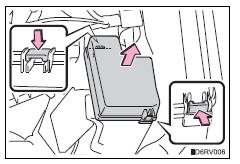
Under the instrument panel
Remove the cover.
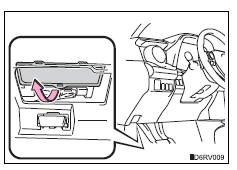
behind the instrument panel
Remove the instrument panel.
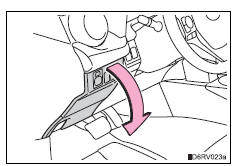
- Remove the fuse with the pullout tool.
Only type a fuse can be removed using the pullout tool.
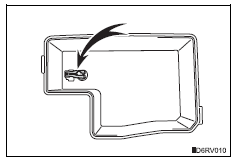
- Check if the fuse is blown.
- Normal fuse
- Blown fuse
Type a and b: replace the blown fuse with a new fuse of an appropriate amperage rating.
The amperage rating can be found on the fuse box lid.
Type c and d: contact your toyota dealer.
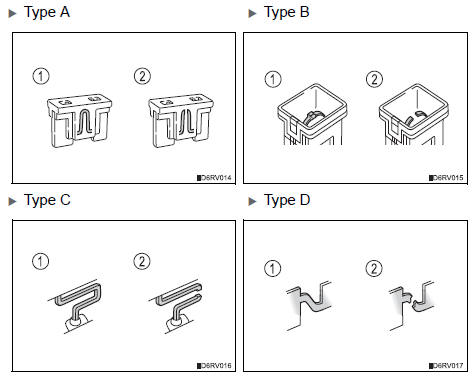
Fuse layout and amperage ratings
Engine compartment

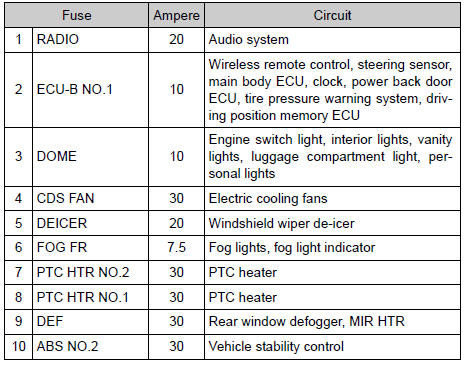
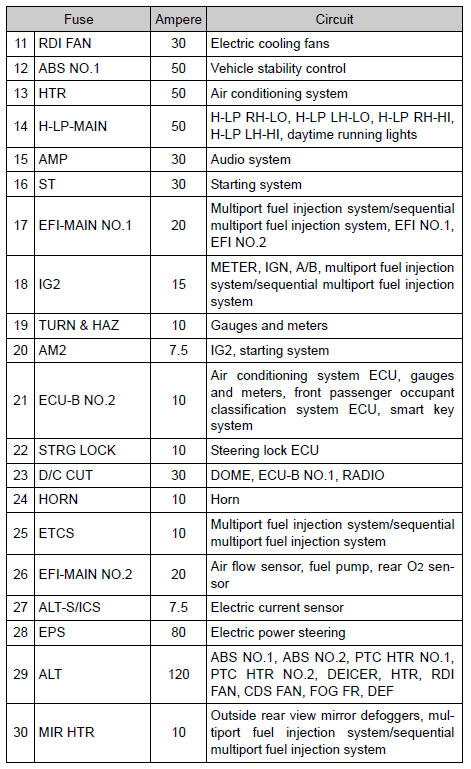
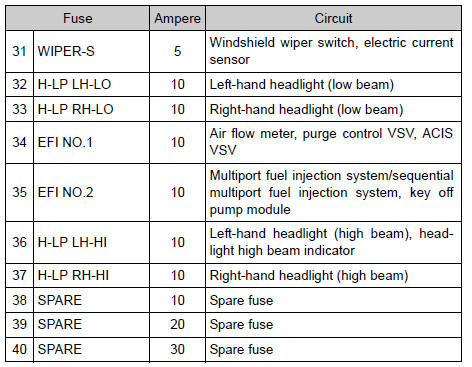
Under the instrument panel
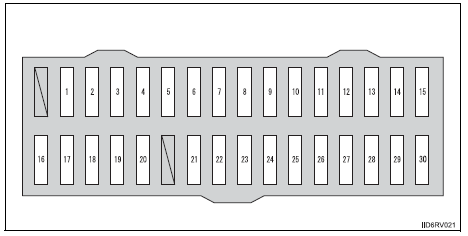
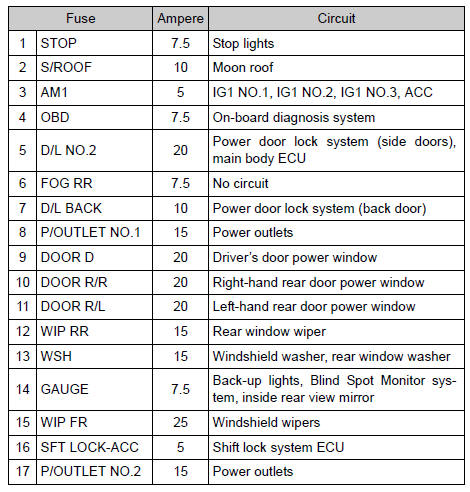
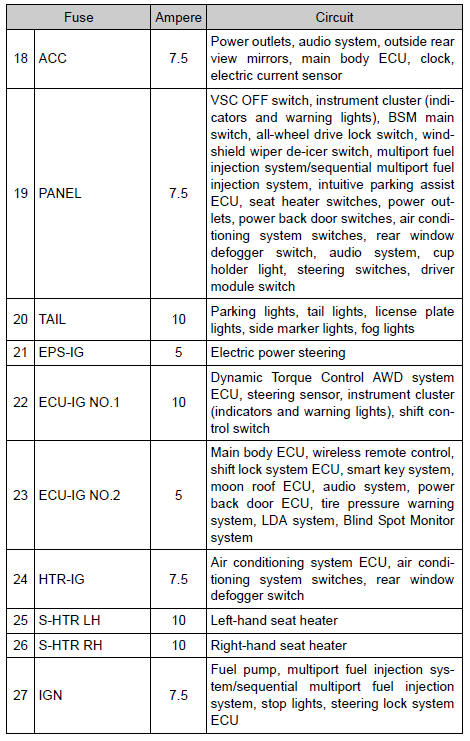
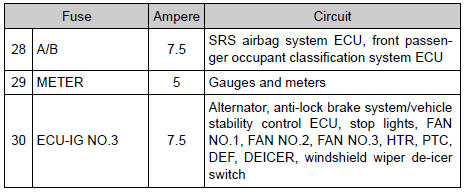
Behind the instrument panel
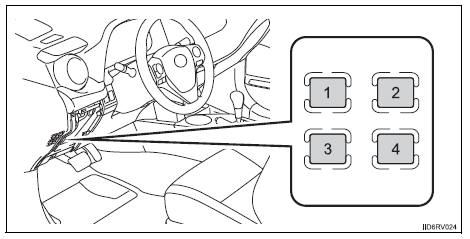

After a fuse is replaced
- If the lights do not turn on even after the fuse has been replaced, a bulb may need replacement.
- If the replaced fuse blows again, have the vehicle inspected by your toyota dealer.
If there is an overload in a circuit
The fuses are designed to blow, protecting the wiring harness from damage.
Caution
To prevent system breakdowns and vehicle fire
Observe the following precautions.
Failure to do so may cause damage to the vehicle, and possibly a fire or injury.
- Never use a fuse of a higher amperage rating than that indicated, or use any other object in place of a fuse.
- Always use a genuine toyota fuse or equivalent.
Never replace a fuse with a wire, even as a temporary fix.
- Do not modify the fuses or fuse boxes.
Notice
Before replacing fuses
Have the cause of electrical overload determined and repaired by your toyota dealer as soon as possible.
 Wireless remote
control/electronic
key battery
Wireless remote
control/electronic
key battery
Replace the battery with a new one if it is depleted.
You will need the following items:
Flathead screwdriver
Small flathead screwdriver
Lithium battery cr2016 (vehicles without a smart key s ...
 Light bulbs
Light bulbs
You may replace the following bulbs by yourself. The difficulty
level of replacement varies depending on the bulb. If necessary
bulb replacement seems difficult to perform, contact your
toyota deal ...
Other materials:
Fail-safe chart
If a problem occurs in the electric power steering system, the
p/s warning light will come on in the combination meter and
steering power assist will be stopped, fixed at a particular
point, or decreased simultaneously to protect the system.
Hint:
The amount of power assist may be decreased ...
Removal and installation of fuel control
parts
Place for removing and installing fuel
system parts
Work in a location with good air ventilation that
does not have welders, grinders, drills, electric
motors, stoves, or any other ignition sources.
Never work in a pit or near a pit as vaporized
fuel will collect in those places.
...
Terminals of ecu (2005/11-2006/01)
Check air conditioning amplifier
Measure the voltage and resistance of the
connectors.
Hint:
Check from the rear of the connector while it is
connected to the air conditioning amplifier.
using an oscilloscope, check waveform 1.
Can communication signal
Hint:
...
